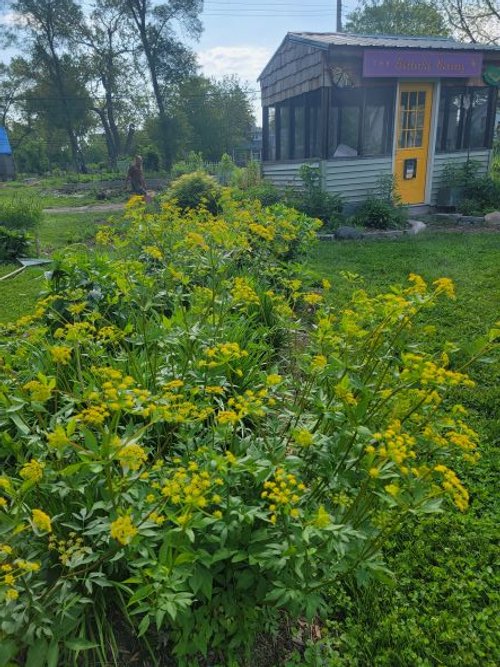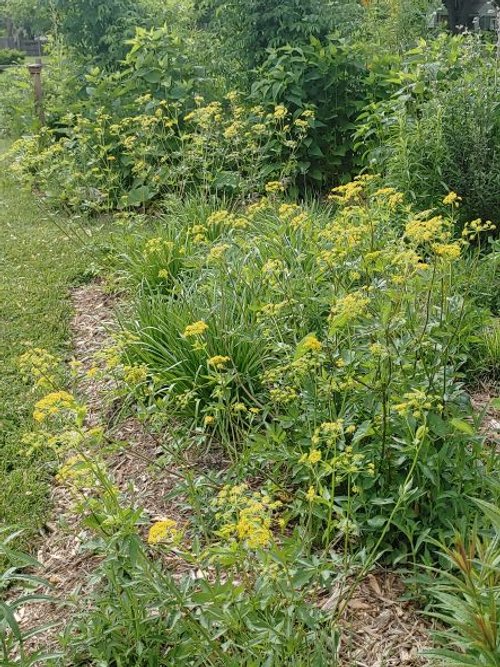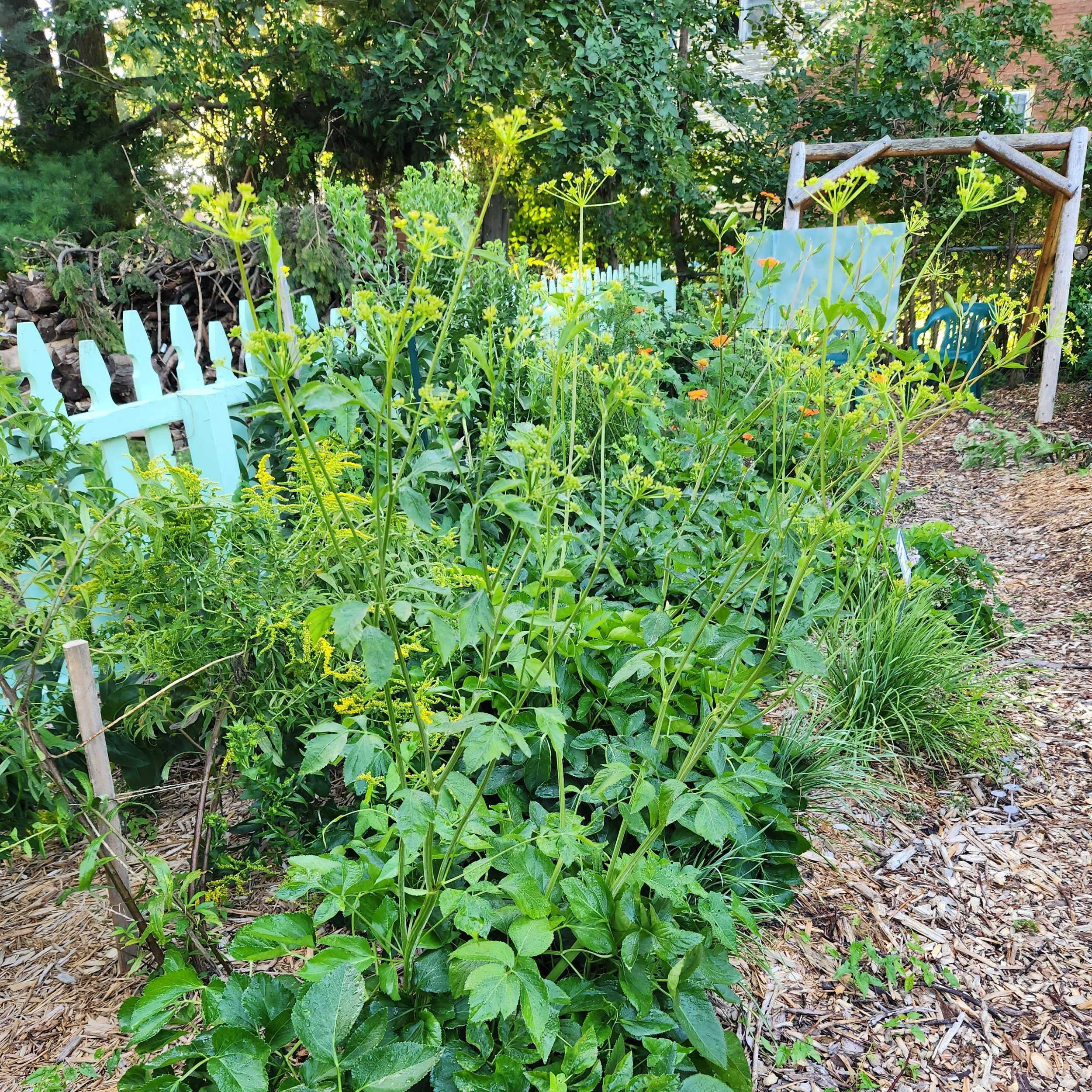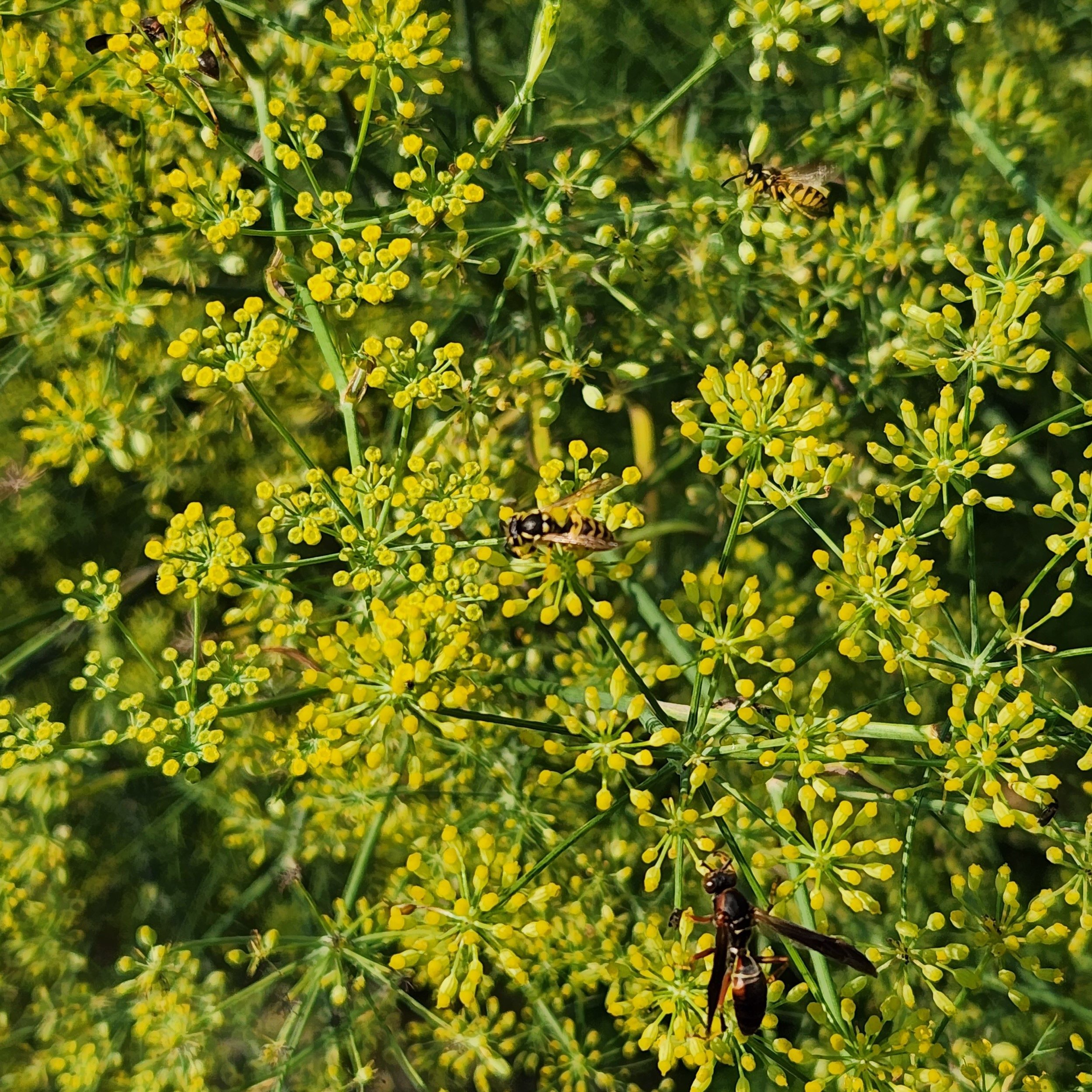 Image 1 of 6
Image 1 of 6

 Image 2 of 6
Image 2 of 6

 Image 3 of 6
Image 3 of 6

 Image 4 of 6
Image 4 of 6

 Image 5 of 6
Image 5 of 6

 Image 6 of 6
Image 6 of 6







Zizia aurea, Golden Alexander, Quart pot
Zizia aurea, Golden Alexander
FS-Full shade, Zone 3, blooms April-June, 3’ x 1-2’. wet to medium dry.
We order this plant from Wild Type. They cannot guarantee it for 2025. We would refund or ask you about substituting if they cannot provide this plant.
Zizia aurea is one of those natives that every garden should have. It’s fairly easy to grow and, although considered short-lived, will self-seed and persist in many sun/soil situations. Also called Golden Zizia, Golden Alexanders will tolerate a lot of shade but prefer full sun or light shade. Zizia is an important plant to a number of short-tongued insects that are able to easily reach the nectar in the small yellow flowers. Golden Alexanders have a long bloom time, giving the garden/prairie some well-deserved early color for several weeks in late spring to early summer when many other plants have not yet flowered. It’s a member of the carrot family and there are other related plants that look similar. You can distinguish Alexander by the heart shaped leaves at its base. A good fresh and dried cut flower. During 2023 we had a second bloom in September. A well behaved plant that produces needed nectar early in the season.
Attracts a host of native bees, honey bees, native wasps, soldier beetles and butterflies. It is a host plant for the Black Swallowtail butterfly and an important early spring plant because it provides nectar to long and short-tongued bees and Lady beetles which lay eggs on its leaves. The Swallowtail family of butterflies have adapted to use many plants in the carrot family like Dill or Fennel, which are not native. Golden Alexander is the native plant they evolved with for millions of years!
Zizia aurea, Golden Alexander
FS-Full shade, Zone 3, blooms April-June, 3’ x 1-2’. wet to medium dry.
We order this plant from Wild Type. They cannot guarantee it for 2025. We would refund or ask you about substituting if they cannot provide this plant.
Zizia aurea is one of those natives that every garden should have. It’s fairly easy to grow and, although considered short-lived, will self-seed and persist in many sun/soil situations. Also called Golden Zizia, Golden Alexanders will tolerate a lot of shade but prefer full sun or light shade. Zizia is an important plant to a number of short-tongued insects that are able to easily reach the nectar in the small yellow flowers. Golden Alexanders have a long bloom time, giving the garden/prairie some well-deserved early color for several weeks in late spring to early summer when many other plants have not yet flowered. It’s a member of the carrot family and there are other related plants that look similar. You can distinguish Alexander by the heart shaped leaves at its base. A good fresh and dried cut flower. During 2023 we had a second bloom in September. A well behaved plant that produces needed nectar early in the season.
Attracts a host of native bees, honey bees, native wasps, soldier beetles and butterflies. It is a host plant for the Black Swallowtail butterfly and an important early spring plant because it provides nectar to long and short-tongued bees and Lady beetles which lay eggs on its leaves. The Swallowtail family of butterflies have adapted to use many plants in the carrot family like Dill or Fennel, which are not native. Golden Alexander is the native plant they evolved with for millions of years!